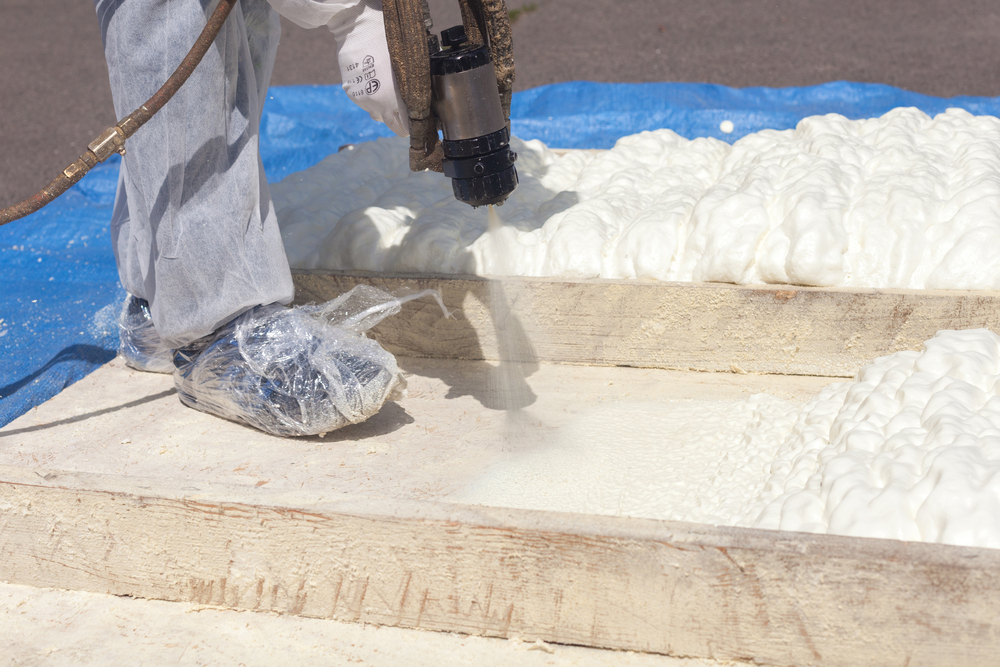Not sure how much spray foam insulation you should apply?
The maximum thickness of spray foam that builders usually apply is between 2 to 10 inches. Maximum thickness, however, varies and is influenced by several factors such as the type of spray foam, the insulation’s location and required R-Value, the climate, as well as how the material was formulated.
In this article, we will explore why spray foam needs to be applied according to the optimal thickness.
What’s The Standard Thickness For Spray Foam?
The standard amount or maximum thickness of spray polyurethane foam builders can apply on residential and commercial buildings appears to be a confusing and long-standing discourse. And it seems like a lot of contractors are unaware of the fact that the insulation material has standard thickness.
But per the newsletter published by Insulation Institute, the standard or maximum thickness of spray polyurethane foam may be 2 inches only. Although this is an average recommendation, it may vary depending on several factors.
Limitation on foam thickness is divided into two categories: maximum cured-foam thickness arising from code-mandated flame-spread tests and maximum thickness per pass during installation of the spray foam. Manufacturers also formulate their products differently which—depending on the tests’ results conducted by the International Code Council Evaluation Service (ICC-ES)—makes each product vary in maximum thickness.
Spray foam also comes in two forms: closed-cell and open-cell spray foam. Each type varies in terms of standard thickness since their composition and thermal performance differ too. On top of that, the maximum thickness based on spray foam code requirements does not provide the standard insulation specifications, specifically the R-Value.
Due to this, builders calculate the amount or maximum thickness of spray foam based on the required R-Value needed for a specific assembly. There is also a general rule among insulation experts to follow and adhere to the manufacturer’s recommended thickness.
That said, below are the typical standard thickness builders follow for both open-cell and closed-cell spray foam insulation.
For Open-cell Spray Foam
- Walls: Up to 3 inches
- Ceiling or roof deck: 6 to 10 inches
- Basement: Between 2 to 7 inches
For Closed-cell Spray Foam
- Walls: Between 2 to 3 inches
- Ceiling or roof deck: 4 to 5 inches
- Basement: Between 2 to 7 inches
What Affects The Optimal Thickness of Spray Foam?
The amount of spray polyurethane foam builders can apply varies depending on different factors, including the type and brand of spray foam, location, as well as weather.
Here’s why.
Type of Spray Foam
As you noticed earlier, closed-cell and open-cell spray foams vary in maximum thickness. That is because each spray foam varies in composition and R-Value. Open-cell, for example, is pliable and lightweight while closed-cell is dense and rigid. And these essentially affect their thermal resistance or R-Value.
Closed-cell spray foam’s thick and heavy composition makes it a better heat barrier, giving it a higher R-Value of R-6 to R-7 per inch. Meanwhile, open-cell spray foam is light and elastic, giving it a not-so-high R-Value of R-3.6 to R-3.9 per inch.
Location of Insulation
Building codes require specific R-Value on each assembly of a structure. Consequently, codes affect spray foam insulation’s standard thickness.
As you noticed earlier, the amount of open-cell and closed-cell spray foam changes according to the location. In the basement, for example, the typical thickness builders apply is 2 to 7 inches for both insulation types. In the ceiling and roof deck, however, open-cell needs to be applied 6 to 10 inches while closed-cell requires 4 to 5 inches only.
Climate
Apart from the location of insulation, climate affects the optimal thickness of spray foam too. In places with colder weather, the required average R-Value for attic insulation is between R-38 and R-49, while all climate zones must not go lower than R-30.
Below is a chart showing the required R-Value for each assembly in seven, different climate zones across the USA.
| Climate Zone | For Walls | For Attic | For Floor |
| 1 | R-13 | R-30 | R-13 |
| 2 | R-13 | R-49 | R-13 |
| 3 | R-19 | R-49 | R-19 |
| 4 | R-19 | R-60 | R-30 |
| 5 | R-21 | R-60 | R-30 |
| 6 | R-21 | R-60 | R-30 |
| 7 | R-21 | R-60 | R-38 |
Formulation
There are a lot of spray polyurethane foam manufacturers today. And each of them has its way or formula on how to create the insulation material. It is also the reason why insulation experts made the general rule of following the manufacturer’s recommended thickness.
Essentially, a spray foam’s formulation or how it was catalyzed significantly affects the amount of material that needs to be applied. Roger Morrison, North Carolina Foam Industries production manager, explained that if the foam is heavily catalyzed, the application must be thinner because the heat from the exothermic reaction is produced quickly.
How Thickness Affects R-Value of Spray Foam?
In insulation, it is a general rule that the thicker the material is the better the R-Value is as well. But an insulation material’s R-Value does not rely on thickness alone. Density and the type of insulation material play a key role too.
Take closed-cell spray foam, as an example. It is denser and rigid which gives it an R-Value of R-6 to R-7 per inch. Unlike open-cell spray foam which is light and pliable and has an R-Value of R-3.6 to R-3.9 per inch only.





